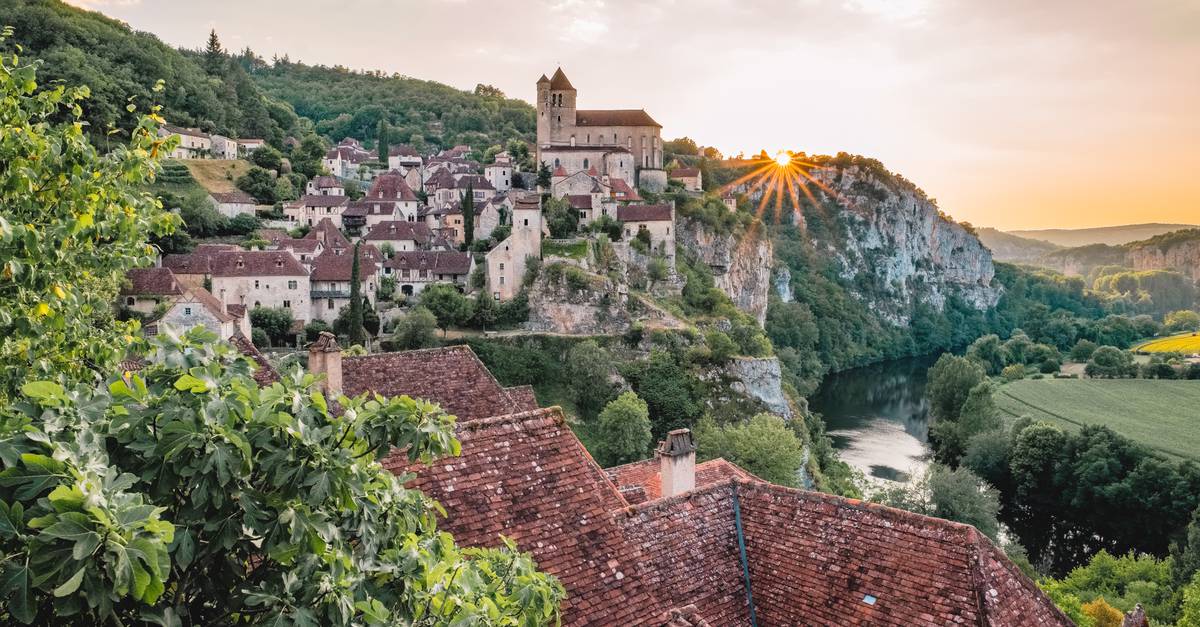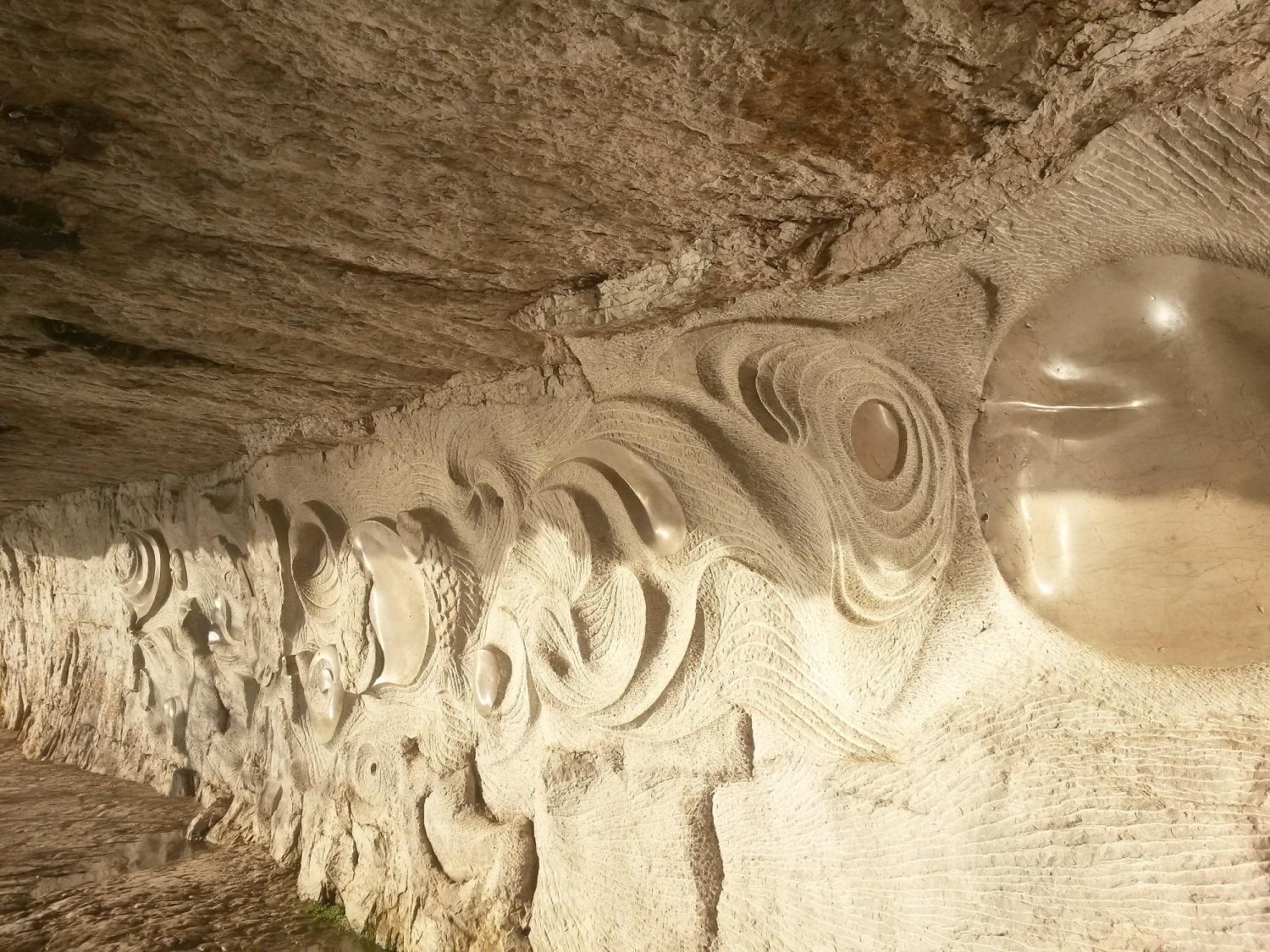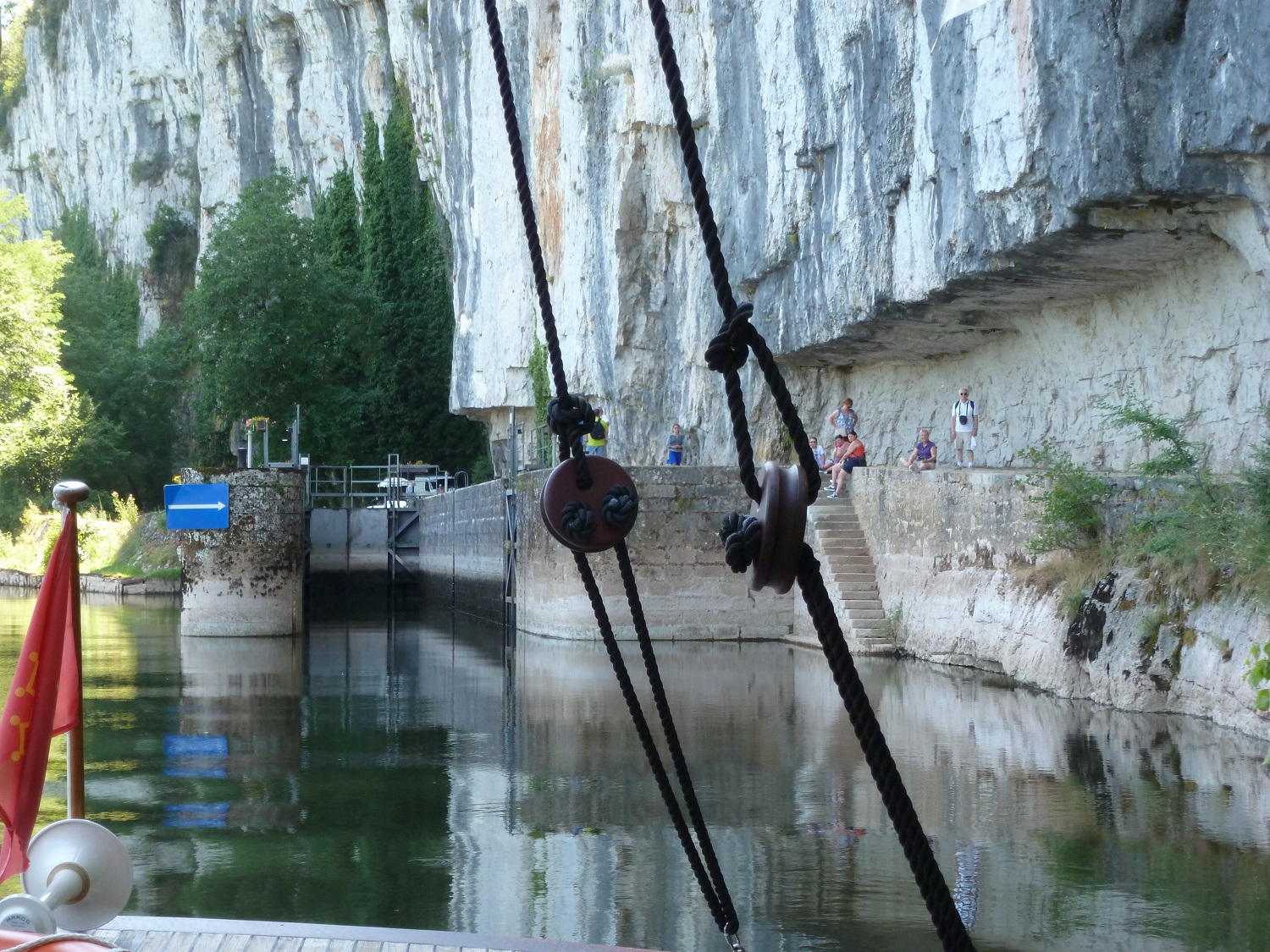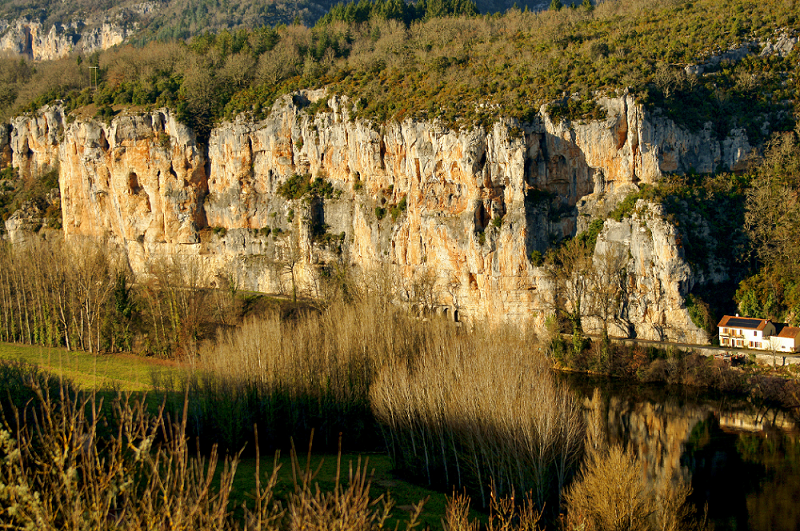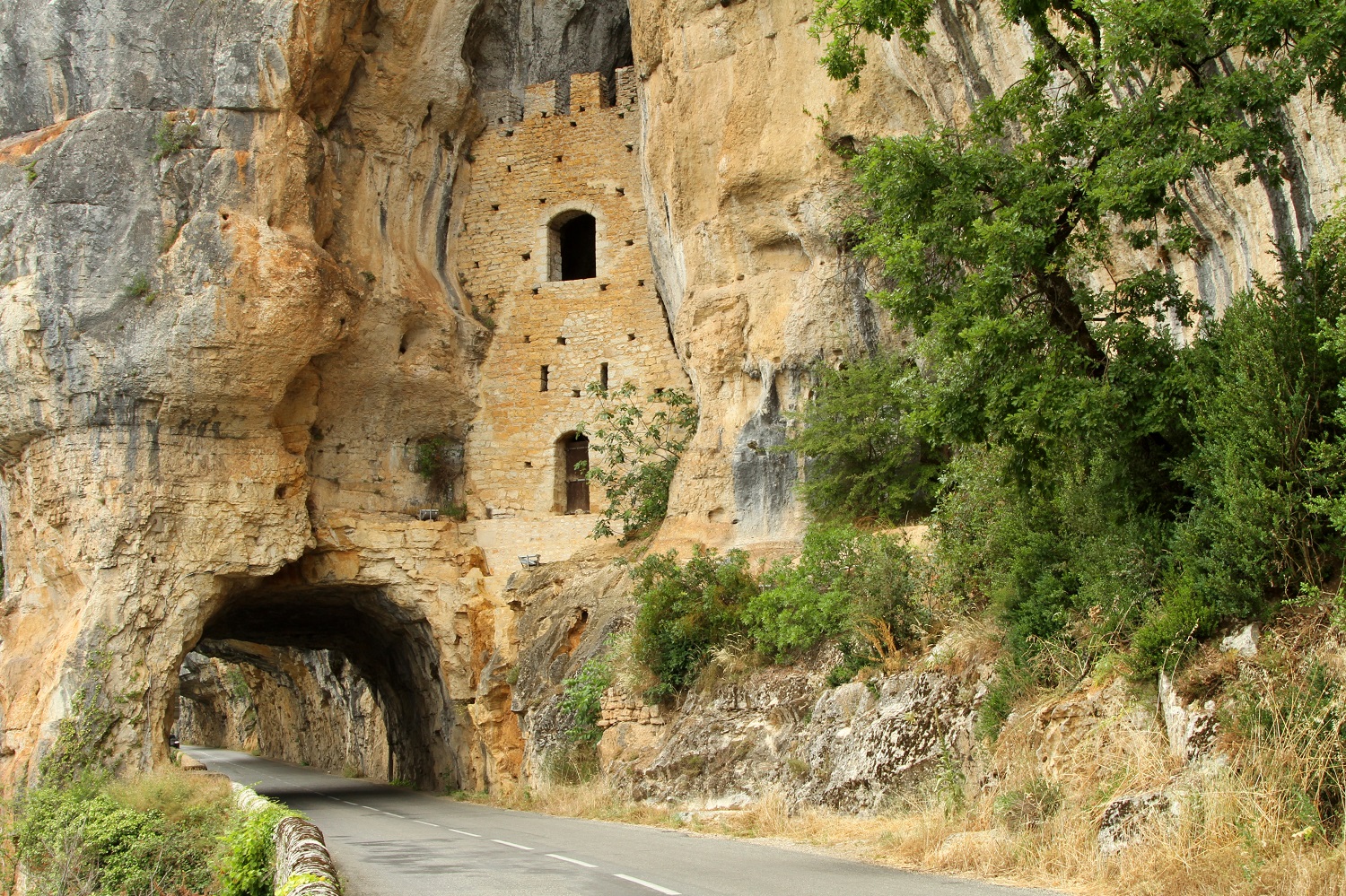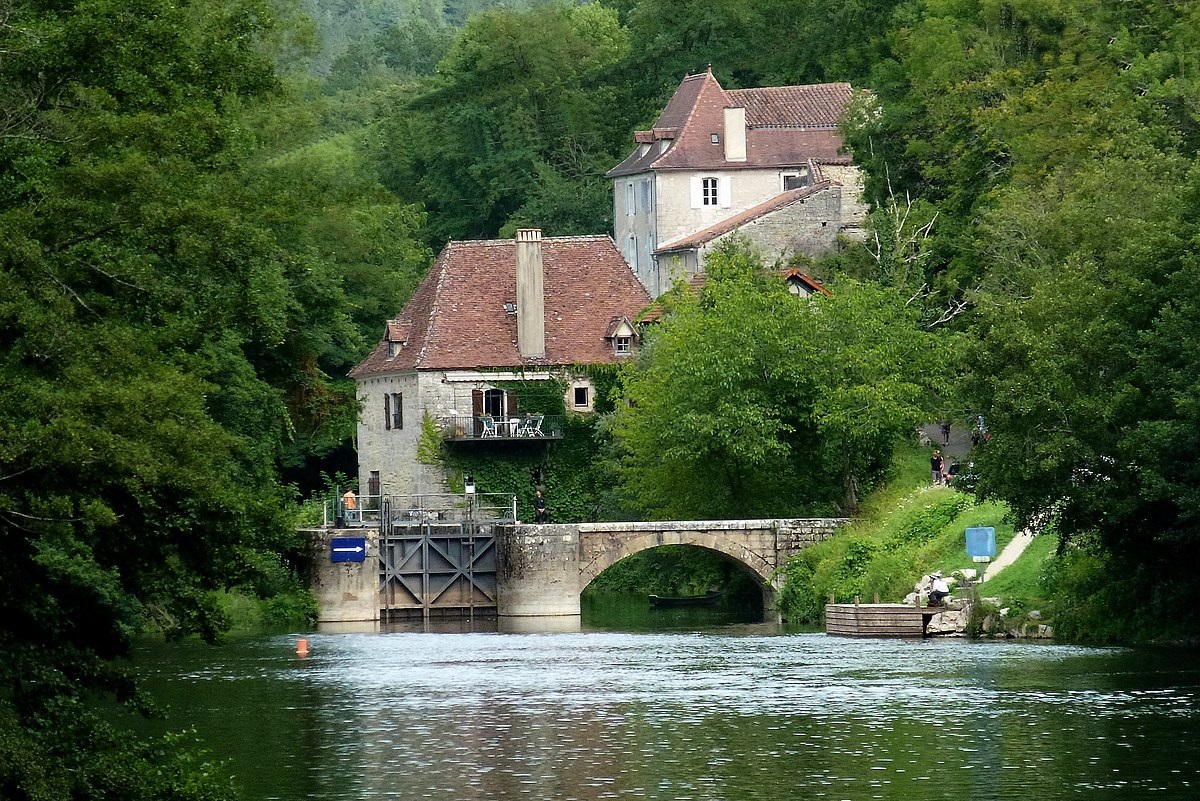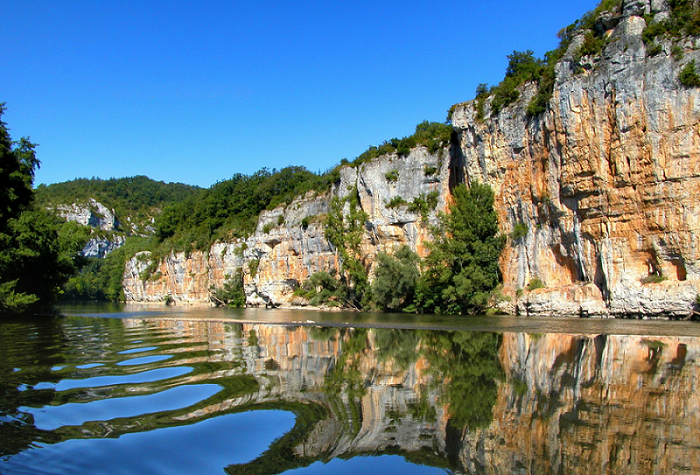7 WONDERS
THE VILLAGE OF SAINT-CIRQ-LAPOPIE
Saint-Cirq-Lapopie was born between the 9th and 11th centuries. Three noble families shared the village at the time: the Lapopie, Gourdon and Cardaillac families. They built castles and fortified houses overlooking the rest of the village, as well as the steep narrow streets thar give Saint-Cirq its charm still today. In the Middle Ages, the streets of the historic village were filled with artisans' shops: from boilermakers and leatherworkers to the roubinetaïres (wood-turners who crafted small boxwood taps for wine barrels), long an expertise in the area.
Over time, gabariers settled into Saint-Ciq-Lapopie and its surrounding area. They built locks, mills, dams and towpaths. Today, both the artisans and the river activity are still present; artisans crafting products for village visitors and boatmen giving them them the experience of the golden days of gabariers on the River Lot. Many artists have also settled in the village, offering an array of galleries and museums to travelers from near and far.
THE TOWPATH IN BOUZIÈS
The towpath in Bouziès is located between the inland port in the village and the river dock in Saint-Cirq-Lapopie. Set out on a 4.5 km walk (one-way). Enjoy the birds singing, the peaceful river and the vistas of the Lot Valley... and other delightful surprises such as the Aulanac Mill, the manual lock in Ganil and especially the portion of the towpath carved right into the face of the cliff.
Imagine a near-tunnel, 400 meters long and 2 meters high looking out directly over the river - truly one of a kind! The workers who carved out the stone (from 1843 to 1846) certaintly had courage. The purpose was to be able to haul boats back up the river. At the heart of the rocky towpath are a series of sculpted figures. Visitors can run their fingers over the shapes and let their imaginations wander, but Daniel Monnier created the bas-relief as a representation of the River Lot (fish, birds, water...). An experience sure to stay in the memories of travelers of all ages.
THE MANUAL LOCK IN GANIL
The River Lot has one specificity: manual locks. Most other waterways in France function automatically, the Lot boasts one manual lock, similar to that designed by Leonardo da Vinci, inventor of the lockage system that revolutionized waterway navigation in his time. Boat crews would turn the cranks to pass through a lock.
The Ganil lock is fortunate to have a lock operator during high-season to regulate traffic and ease the passing of boats. He carries out the same motions as lockmasters from long ago, who were employed by the State, giving visitors a glimpse of the Lot's History. It is hard not to be intrigued by the ballet of the lock doors and paddles swaying open and closed.
The manual lock is located along the towpath that runs between Bouziès and Saint Cirq Lapopie, offering a truly exceptional perspective of the river.
THE CLIFFS
These cliffs impress everyone who crosses their path. Covering a significant portion of the Lot Valley, they can reach up to 70 meters in height. The river gradually dug its bed into the limestone landscapes over the course of centuries. The horizontal lines you see are layers of sediment that have built up over the years.
Inhabitants from all eras attempted to tame this natural wonder. Many tried to take refuge inside the cliffs for protection (caves such as Pech-Merle, fortifications like the Château des Anglais). Others used the heights to dominate the surrounding areas (village of Saint-Cirq-Lapopie), while others still reshaped it to create routes for transit (towpath carved into the cliffs).
The white and ochre hues in the Bouziès cliffs beautifully enhanced by the sun's rays shining directly onto the rock, but also reflecting off the water. The limestone walls are an amazing sight to see. Standing near them, they seem to go on for ages. And you feel very, very small!
THE OLD CARGO PORT
Located just below the village of Saint-Cirq-Lapopie, the old cargo port is made up of a lock, landing docks with an arched entrance, and a watermill. Back in the days of gabariers, the connection between the port and the village above was strong. The village produced artisanal goods, and the boatmen transported them.
The Aulanac watermill was built in the 14th century and owned by the noble families of the village. One of its specificities are the rudders that activate its paddles - surely retrieved from old gabares. In those days, millers were often gabariers too, working several jobs to survive.
The port was surely a real beehive: crews loading their boats, artisans carrying down their merchandise, animal drivers preparing for towing, carpenters repairing the gabares, the miller in his mill, the lockmaster by his lock and countrymen lending a hand !
THE CHÂTEAU DES ANGLAIS
The Château des Anglais, or Castle of the English, is a fortification built into the cliff. The only "Château"-like aspect of it is its facade, and "Anglais" surely comes from its occupation during the Hundred Years' War. It is in fact a military infrastructure built in the 11th century to keep watch over the river. A wooden footbridge along the cliff allowed soldiers to patrol the area. The fortification itself served as headquarters.
Besides being used for surveillance purposes, the Château des Anglais gave refuge to inhabitants of the village during flooding or enemy attacks. The cliffs in the area are like Swiss cheese, having housed a great many men and animals. In prehistoric times, men lived in their caves. During various wars, they found refuge in the fortifications. And still today, birds reside in their many hollows. Together, the Lot and Célé valleys boast a total of 7 such fortifications, the most impressive being the Château du Diable in Cabrerets.
THE GANIL CAUSEWAY
The causeway in Ganil offers a spectacular view of a small cove, one of the most charming sights along this portion of the River Lot. In river language, "causeway" refers to a dam with rapids. This is the origin of the French expression "Ponts et Chaussées" (bridges and causeways), as State services were in charge of maintaining this type of manmade structures at the time. The cove in Ganil is a well-preserved natural haven sure to please nature lovers in any crowd.
Nature did not make the causeways. They were built by men working along the river. Millers, for example, tossed large stones into the river to form what they called “lost stone” dams, which created rapids. As you might expect, boat crews did not care for the obstacles that prevented smooth sailing down the river. Saying that millers and gabariers were not the best of friends would be an understatement. A great many scuffles in local inns are mentioned in the records.
The causeway in Ganil offers a spectacular view of a small cove, one of the most charming sights along this portion of the River Lot. In river language, "causeway" refers to a dam with rapids. This is the origin of the French expression "Ponts et Chaussées" (bridges and causeways), as State services were in charge of maintaining this type of manmade structures at the time. The cove in Ganil is a well-preserved natural haven sure to please nature lovers in any crowd.
Nature did not make the causeways. They were built by men working along the river. Millers, for example, tossed large stones into the river to form what they called “lost stone” dams, which created rapids. As you might expect, boat crews did not care for the obstacles that prevented smooth sailing down the river. Saying that millers and gabariers were not the best of friends would be an understatement. A great many scuffles in local inns are mentioned in the records.

